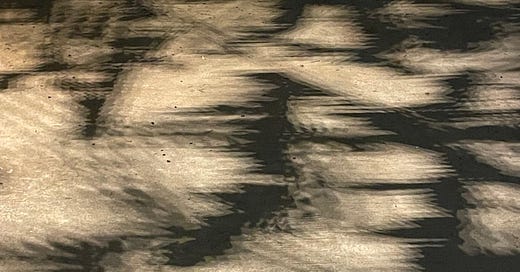I read AK Ramanujan’s Collected Poems (OUP 1995) on my journey to Delhi today. If poetry is language made musical in a non-obvious but keenly perceptible fashion, Ramanujan’s original poetry is an illustrious example. The words flow into each other, anticipating the sound to come three verses later, all rounding up nicely towards the end. Each poem is a self-contained world, a glimpse into a reverie, a well-formed thought, never fragmented or left strayed. There is a playful completion and roundness to Ramanujan’s poetry, a clean finish and a story well told. And yet, it is remarkably modern. The metaphors are all of the quotidian, there is a weariness with the mundane existence of living life—although the weariness does not become a site of indulgence or nostalgia—and constant movement, lack of fixed placeness. In his poems, Ramanujan mentions his relations—wife, children, parents, grandparents, his geographical location—South India or Chicago, his affiliation—Hindu or a university professor, and he mentions his bare humanness—his body, animal-like, and his soul, singular and universal. There is a joy to be found in Ramanujan poems. Despite and within modernity’s disenchantment, Ramanujan invests the world and its many objects and occurrences with a delicious magic. I say delicious because the poems are not only a sonic landscape but an entire sensorium—visual, olfactory, imaginative. There is a push in his poems to go on with life despite everything. He says, in one of my favourite verses from the poem THE HINDOO: the only risk:
“At the bottom of all this bottomless enterprise to keep simple the heart’s given beat, the only risk is heartlessness.”
Ramanujan’s is an attempt to save his soul—and ours by extension—from an empty heartlessness. It is a protest against modernity’s laying bare of the world, although not a protest in a loud, resistance-movement fashion, but a silent, calm protest. A protest of “merely living” (Ernaux, The Years) in the world with an inner joie d’espirit. Ramanujan’s Hindu upbringing gives his some tools to access this inner joy. The stories and legends give him lenses to view the world a little differently, pay closer attention to animals and other life forms, finding in them the same life that flows through mortal humans. It offers him also a way to give refuge to his experience in a language that is not presentist. This is perhaps the primary reason for the brilliant freshness of these poems. There is a fullness and vibrancy to the metaphors and devices in the writing, not defeated by the brute, calculating logics of modernity. At the same time, his poems are not not economical. There are no extra words, no ostentatiousness or ornamentation. In perhaps the shortest poem of this collection, On the Death of a Poem, he writes:
“Images consult one another, a conscience- stricken jury, and come slowly to a sentence.”
The double entendre in this poem is magnificent. The images of his poetry become one with the memories of his mind, consulting one another as they come to a sentence. The sentence is at once a consensus on how life must be lived and the sentence of this poem. The world sentences us constantly to living. We draw out images from the world to compose our own sentences. The choice is between which sentence to serve. This serving only ever comes to us, as Ramanujan is careful to add, slowly. There is no rushing to a sentence, no rushing to freedom either. We make sense of the world tectonically—images shifting in our head imperceptibly until they become perceptible in the form of a verse on the page. This learning to live in the world quietly, with grace and joy, gathering traces, is what I learn from Ramanujan. He writes in the poem called Traces:
“The earth itself has layers of time, shelves of fossils that carry traces, of anything that will leave a trace, like seed, shell, a leaf pressed on clay, wingbone and cowskull, waiting for people to decipher and give themselves a past and a family tree.”



